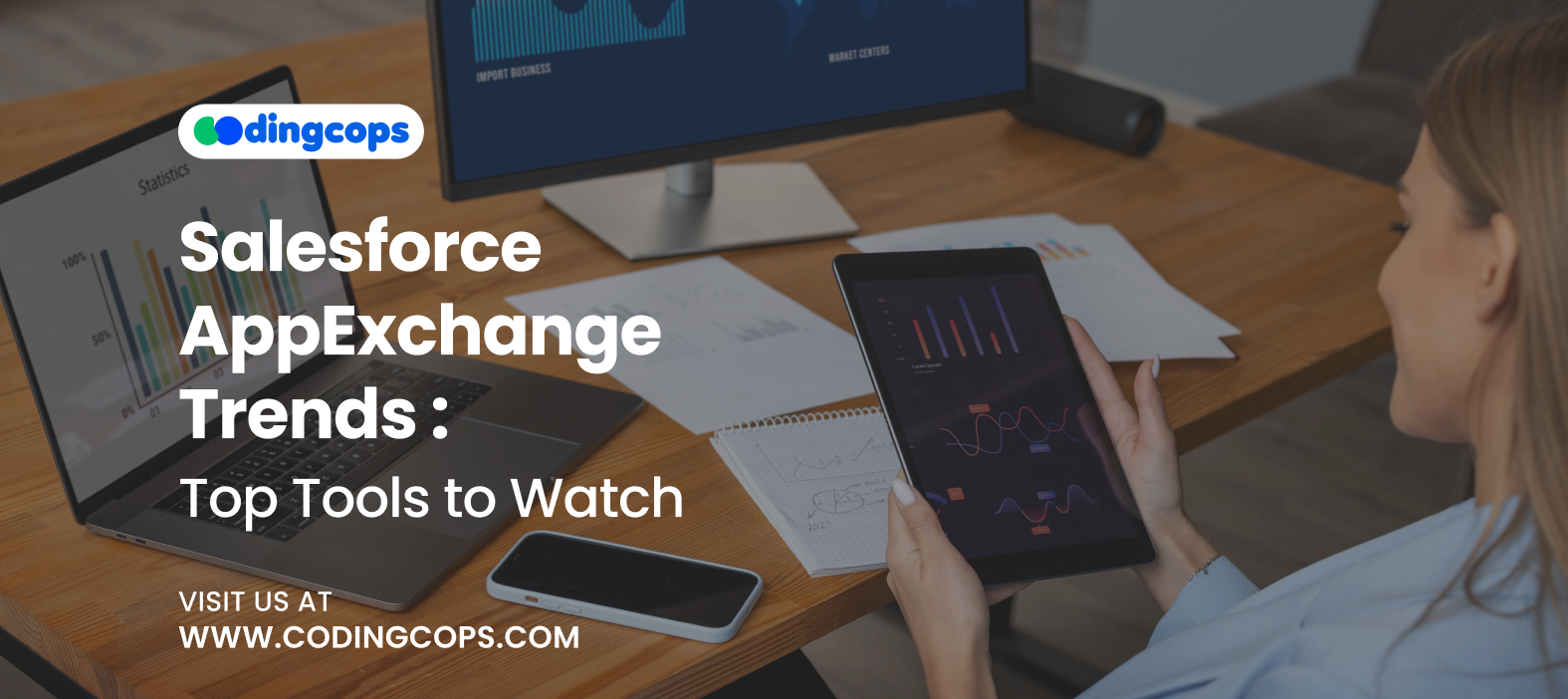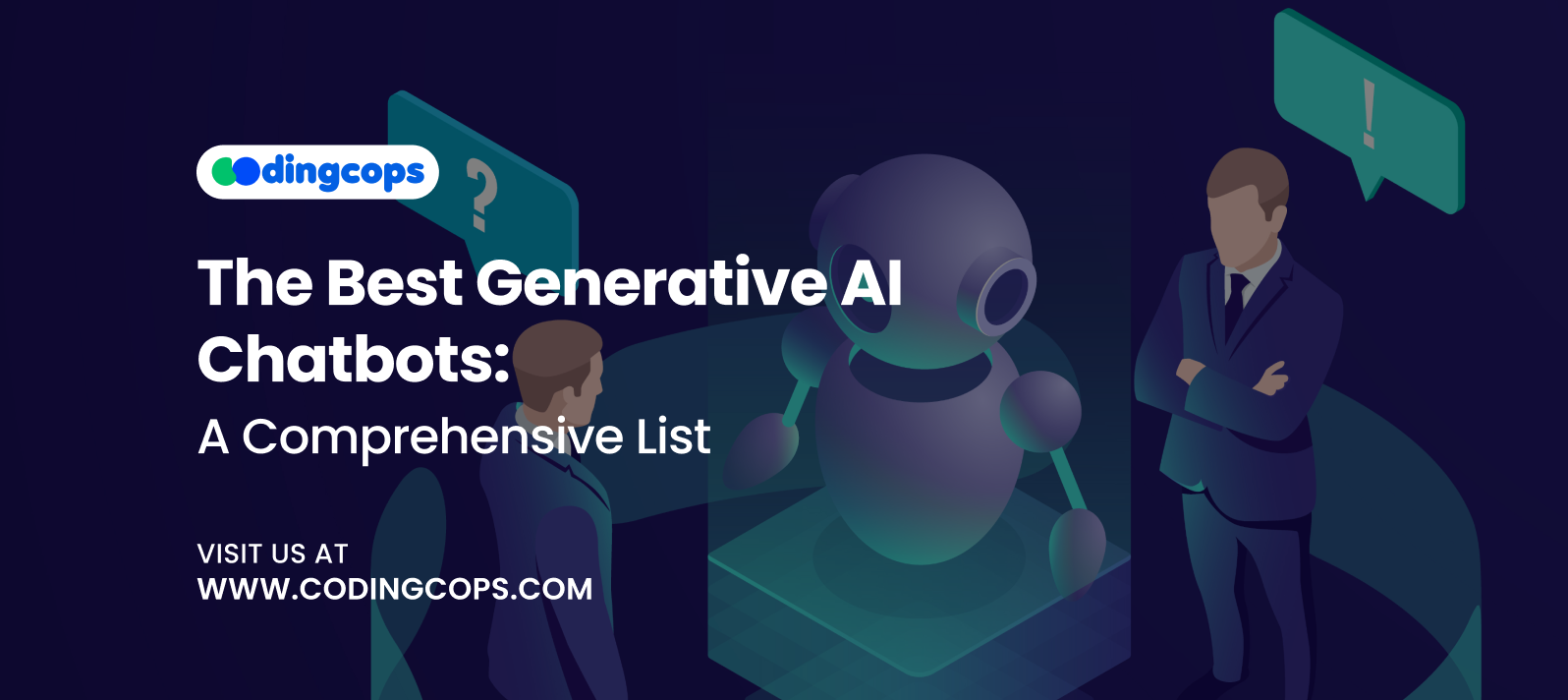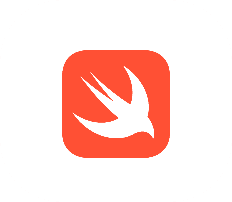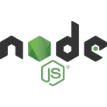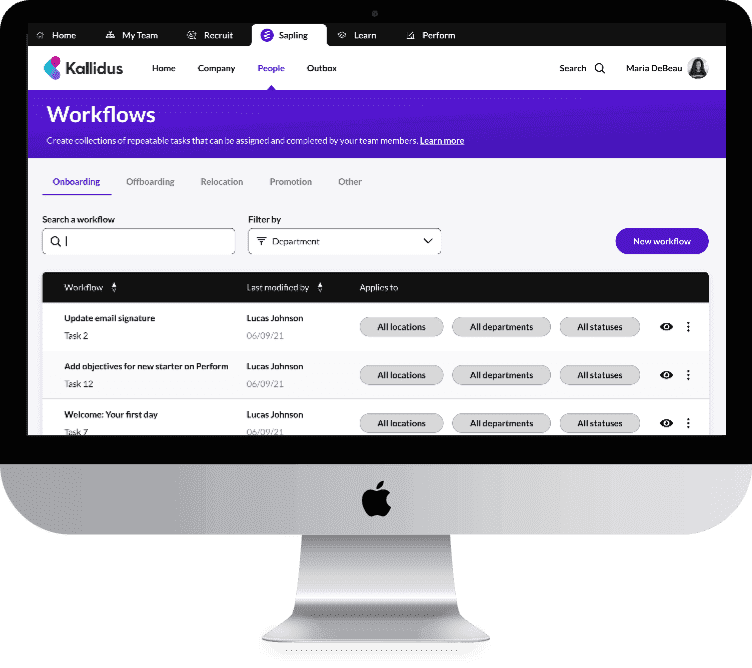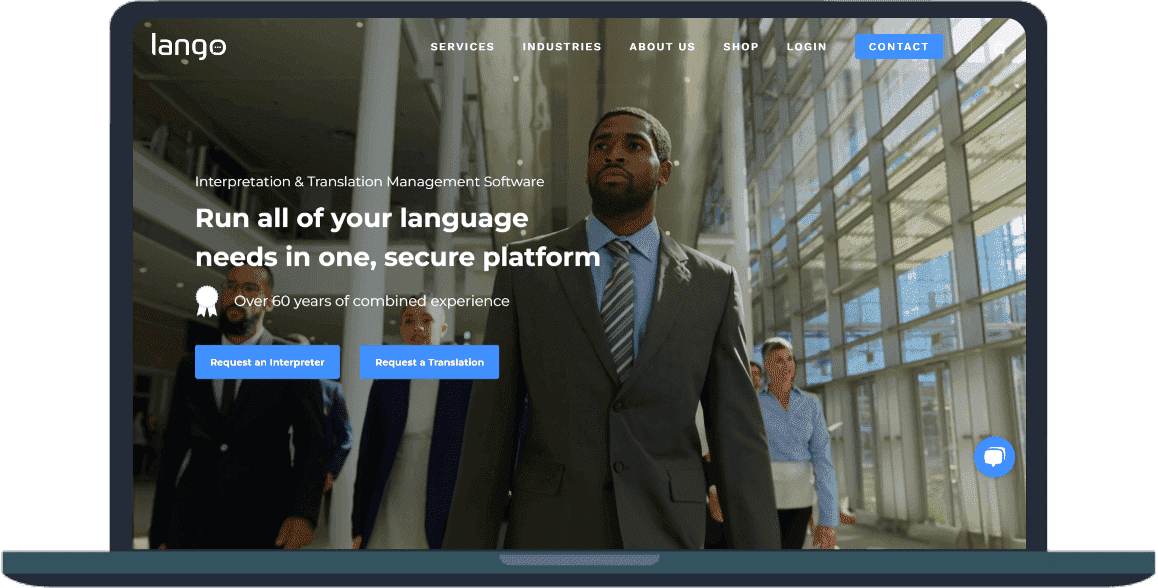Do you know how popular it is to integrate AI with IoT? Let’s understand with statistics. According to Market.us, the size of the Global AI in the IoT market is expected to be around $201.3 Billion by 2033. This number will have increase of approximately 504.5 % from 2024.
That’s a huge leap!
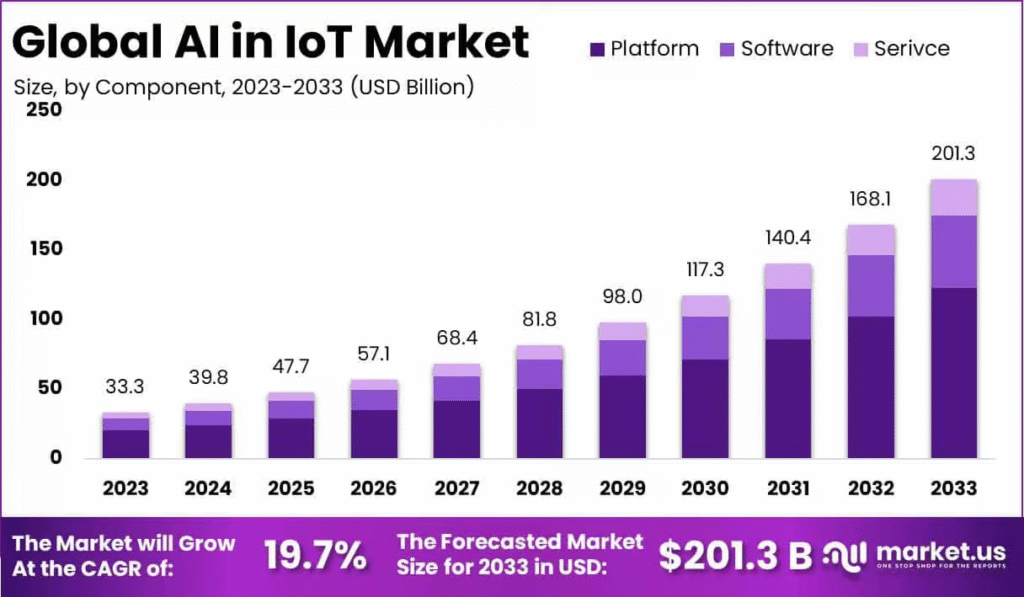
Integrating artificial intelligence with the Internet of Things has brought technological innovation across various industries. Both technologies are rapidly expanding and revolutionizing the behavior of devices and machines in how they operate and interact with us.
Moreover, the era we live in is of smart technologies and hyper-connectivity, where IoT and AI are making their presence swiftly. Integrating both stacks enables the creation of intelligent ecosystems capable of sensing, analyzing, and acting.
Hence, CodingCops is here to enlighten you on the perks of integrating AI with IoT, their use cases across various industries, and the challenges it might throw your way.
IoT and AI – A Brief Overview
The full form of IoT is the Internet of Things, and it is a network of physical devices, appliances, and other objects that are embedded with sensors, software, and connectivity. This combination of sensors, software, and connectivity enables them to collect and exchange data over a network without human interference.
On the other hand, artificial intelligence doesn’t require any introduction as it is an established branch of computer science capable of thinking, analyzing, and acting like humans.
Relationship Between IoT and AI

Let’s understand the relationship between IoT and AI.
The role of IoT is to gather large amounts of data from the connected devices. Whereas AI analyzes the data to derive meaningful insights.
What do we get by combining IoT and AI?
Coupling AI and IoT transforms the raw data into actionable information or intelligence, leading to smarter decision-making, automation, and predictive analytics.
Commonly this combination is referred to as AIoT (Artificial Intelligence of Things). However, it is also known as Smart IoT or Intelligent IoT.
Role of AI in IoT
AI in IoT benefits all, from small to big businesses and the common man. To unlock and understand the true potential of IoT, you need to integrate AI with IoT. Doing so helps you transform raw, unstructured, or real-time data into actionable intelligence.
Here’s what you get by bringing AI and IoT closer together.
Smart Decision-Making
Undoubtedly, IoT devices are very good at collecting and transmitting data, however, it is of no use without AI. Coupled with artificial intelligence, it enables you to have real-time data interpretation and empowers devices to act intelligently and independently based on predefined or learned patterns.
Predictive Analytics
AI analyzes and recognizes historical patterns as it can predict future outcomes. For instance, AI with IoT can predict machine failures, energy demands, etc, allowing preemptive measures.
Machine Learning
AI with the help of ML learns behaviors and patterns by monitoring live systems or human responses. This enables the system to make accurate decisions in IoT applications.
Natural Language Processing
While using NLP, you can interact with IoT devices using human language. Hence this role of AI plays a critical part for voice-controlled assistants, smart appliances, and customer service bots.
Inferential AI
Inferential AI is a form of artificial intelligence that collects information from IoT devices for applying inference to make deductions and generate responses to triggers. A real-time example of inferential AI is having an inference-based AI system that determines the need for more light based on the count of people in the area or other factors.
Real-time Use Cases of AI-IoT Integration

Just look around your surroundings and you will have multiple instances of AI-IoT integrated systems easing your lives. The fusion of AI and IoT gives you many impactful use cases. Here are a few popular real-time examples.
- Smart Homes
Firstly, we will discuss smart homes. Smart homes are increasingly popular and without the role of artificial intelligence, it won’t be possible. AI-powered IoT devices learn user behavior and preferences. Incorporating such devices in your homes allows you to adjust temperature, lighting, and other setting according to user needs.
For instance, a smart home device knows when a homeowner is going to take a shower and adjusts the water temperature accordingly.
- Healthcare and Remote Monitoring
Moving to the other industry, AI and IoT are contributing to the healthcare sector by making it effortless to monitor patients remotely and provide personalized care. Hospitals use wearable medical devices that track the vitals of the patient and send alerts to the hospital invigilators.
Furthermore, the AI algorithms analyze the data to identify patterns and predict potential health issues preemptively.
- Industrial IoT
IoT sensors are installed on manufacturing and heavy machines and production lines to monitor industrial operations. By integrating AI with IoT, it helps predict equipment failures, ensure quality control, and optimize supply chains.
- Autonomous Vehicles
Self-driving cars are also an example of AI and IoT integration. They can sense the environment, AI decision-making, and V2V and V2I communication.
- Agriculture
Lastly, we have agriculture. It is the field that benefits the most from the combination of AI and IoT. AI-powered IoT devices help farmers to improve crop yields and reduce waste. These devices monitor the soil moisture levels, temperature, and other factors that play their role in agriculture.
Additionally, the AI algorithms analyze the data and crop patterns to predict potential issues and rectify them accordingly.
Other common industries that leverage the combination of AI and IoT are:
- Education
- Logistics
- Retail & E-commerce
- Finance
- Hospitality
In conclusion, AI-powered IoT devices are defining new ways of living and working. All these use cases of IoT and AI use Arduino and Raspberry Pi which are the basics of the Internet of Things.
Benefits of AI in IoT
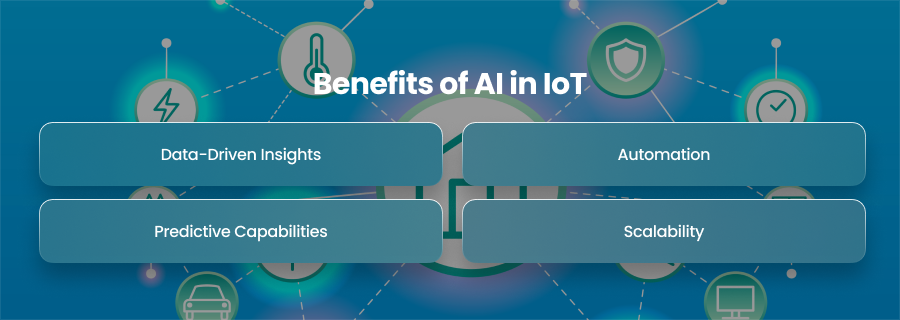
The integration of AI and IoT strengthens the capability to analyze and derive actionable insights from the given data. Moreover, this combination leads to intelligent automation, enhanced decision-making, and improved operational efficiency.
Data-Driven Insights
When you bring the powers of AI to IoT, it processes large amounts of IoT data to generate precise, actionable insights that highly assist businesses in making smarter decisions based on evidence.
Automation
Moreover, AI is capable of automating processes based on IoT input. This process not only minimizes manual effort but also enhances safety and efficiency in various operations such as manufacturing, logistics, and home management.
Predictive Capabilities
AI analyzes historical data and real-time IoT data to anticipate future events. This makes your system capable of predicting system failures, demand surges, etc, while allowing take preventive measures.
Scalability
AI-integrated IoT systems are capable of adapting to changing environments and expanding across devices with little reconfiguration. Thus, the benefit of AI in the Internet of Things enables seamless growth and effortless integration.
Challenges in AI-IoT Integration
- The data you gather in huge amounts, collect, and process for your use can be a target for cyber intruders. To avoid this issue, you need to be vigilant and ensure data protection, encryption, and user privacy.
- Interoperability is also a challenge as the devices from different vendors might not be capable of following the standard protocols. This leads you to face compatibility issues.
- Data management becomes difficult as handling massive amounts of unstructured and real-time data needs to have a robust storage mechanism with analytics solutions.
- Transmitting and processing large amounts of data can create strain networks leading to latency and bandwidth issues.
Future Trends and Opportunities in AI-IoT Integration
The future of AI and IoT combination is bright as many industries and businesses are benefiting from it. With the increase in the number of IoT devices and sensors, the role of AI will also elevate. AI provides valuable insights by processing the raw data from IoT devices, enabling businesses to make future-proof decisions.
- Predictive maintenance is a promising application of IoT and AI combination that analyzes data from the sensor on the machines. Later, AI algorithms identify the potential issues preemptively, allowing teams to tackle the issues proactively.
- AI-IoT combination plays an important role in improving energy efficiency. By analyzing the energy consumption pattern and data, AI algorithms can find ways to reduce energy consumption and optimize energy usage. As a result, it not only saves energy but furnishes huge cost savings.
- AI plays its part in improving safety in industrial setups. Industries incorporate IoT sensors and with AI algorithms it is possible to detect anomalies that inform regarding any safety hazard. As a result, it keeps the workforce safe.
In the End
While summarizing this blog, you must have understood the importance of integrating AI with IoT. Without AI, the data gathered by IoT devices would be of no use and we can’t have valuable and actionable insights.
Hence, introducing AI to IoT devices has brought many benefits and created several opportunities in many fields. It contributes to autonomous working with less human intervention while meeting the current trends and demands.



